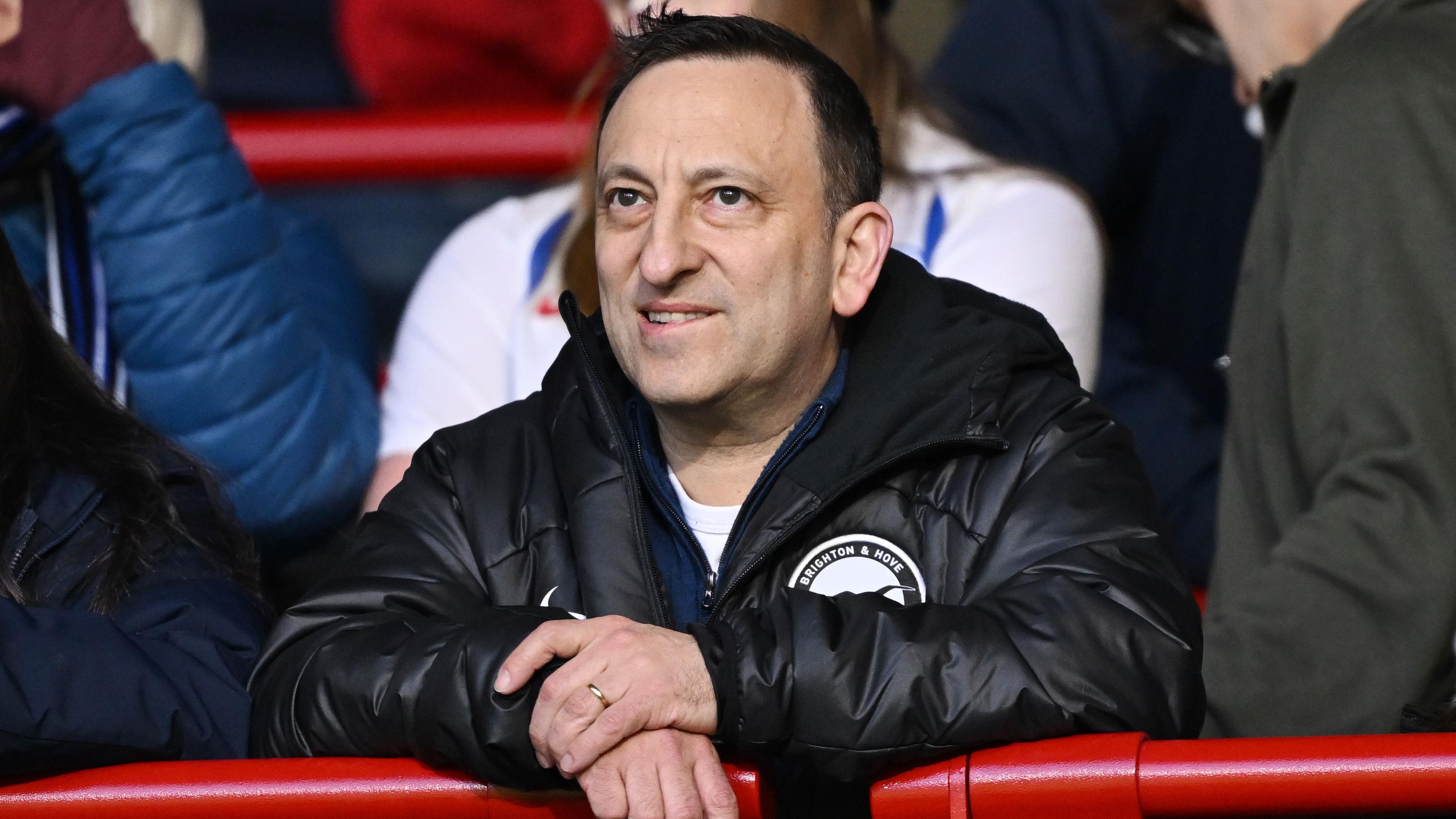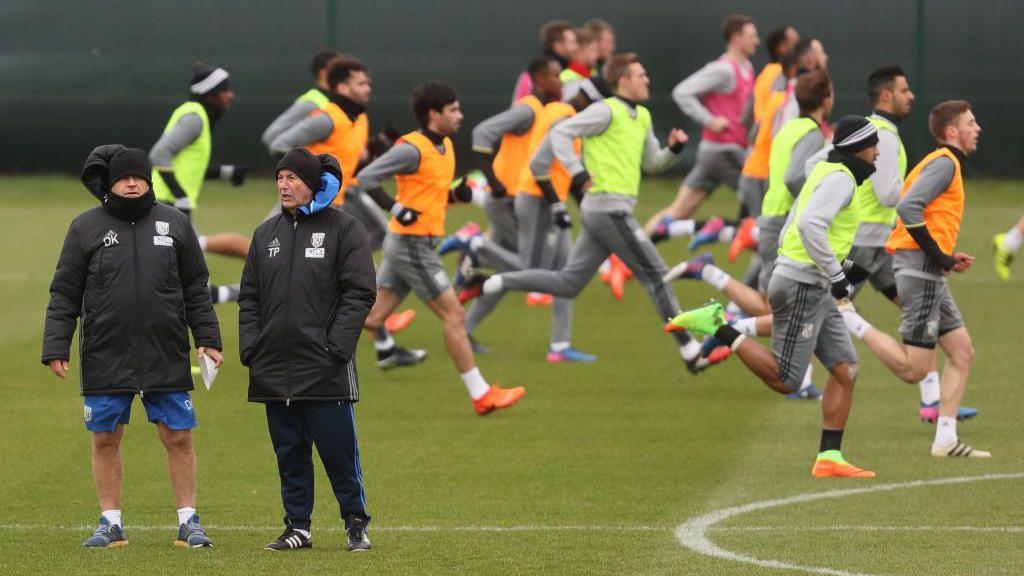Football’s Data-Driven Era: Managers Are Now Little More Than Pawns in a High-Tech Game of Chess
As technology continues to revolutionize professional sports, the role of a football manager has increasingly transformed from a position of authority to one of collaboration, balance, and sometimes submission to the plethora of data-driven insights that now define the modern game. The myriad of departments—from recruitment and sports science to medical teams—has expanded significantly since the late 20th century, complicating what was once a relatively straightforward job.
In 1992, when the Premier League era began, the managerial role encompassed not just strategic oversight of player performances during match day but also a hands-on approach to recruitment and team dynamics. Football management was then characterized by tangible, interpersonal assessments—scouting players through direct observation, building local networks, and relying on instinct and experience rather than analytics. Managers were the ultimate decision-makers and possessed a comprehensive control over their teams, which were smaller and comprised fewer specialized staff.
Fast forward to today, and the landscape has dramatically changed. A modern club is often likened to a corporate entity, layered with different functional departments centered around data collection and analysis. Under the guidance of a director of football, various heads of department—scouting, medical, fitness, and analytics—influence recruitment decisions and player management. While this provides a wealth of information and potential for success, it also breeds a scenario where managers may feel overshadowed or undermined.
The rise of analytics in football cannot be understated. It has revolutionized everything from injury prevention to performance enhancement. Data is a tool that can measure player potential, track fitness, and inform tactical decisions. However, the very existence of this information can lead to internal friction between departments. With specialized teams working independently, conflicting priorities may emerge that could dilute the manager’s vision or philosophy for the team. A head coach or manager frequently finds himself negotiating the influences of a director of football, scouts, and sports scientists—many of whom are interpreting data in ways that may not align with the manager’s strategy or experience.
Pulis’s experience illustrates this shift. His reliance on traditional methods for scouting—contemporaneous observation—built a database in his mind informed by direct interaction and established connections in the football community. The advent of technology offers vastly more data, yet it often lacks the nuance and human element of those formative years. Though today’s data analytics may excel at highlighting statistical trends, they cannot fully encompass the intangible qualities that characterize a great player, such as character or resilience during challenging situations.
Moreover, it raises questions about accountability in recruitment. Pulis expressed frustration over player acquisitions that lack the manager’s input or endorsement. This disjunction can create a rift in team culture when players are signed based solely on metrics that do not align with the manager’s tactical needs. Clubs and managers can lose valuable time and resources on players who, on paper, appear promising but do not fit the squad’s identity or ethos. The distinctiveness of each club—a culmination of its history, ambitions, and style of play—makes tailored player recruitment imperative.
As the modern game evolves, the stakes have never been higher. Managers face intense scrutiny, not only from fans and media but also internally from club hierarchies that demand immediate results. Performance metrics now dominate discussions around player fitness and potential, often leading to a culture where quantitative data trumps qualitative assessments. A manager’s ability to manage the team’s morale and forge interpersonal relationships may get lost in the numbers game.
The medical and sports science departments highlight another crucial aspect of this evolution. Where once managers intuitively gauged a player’s well-being, now they rely on data—physical metrics, injury histories, fitness levels—culled from sports scientists and medical professionals. While they play indispensable roles in promoting player health, a rigid adherence to data may alter the managerial decision-making process. Common sense, as propagated by managers of yore, sometimes appears relegated to secondary status as data-driven approaches dominate discussions around injury prevention and fitness maintenance. For instance, Pulis was firm in his belief that accountability should extend to all departments, especially those focused on player health, which means that fitness coaches and medical staff bear some share of responsibility for players’ performance on the field.
The increase in personnel and complexity doesn’t guarantee better performances. In many ways, it obscures the manager’s role in shaping the team both on and off the pitch. Not only does this vast network operate under their aegis; the responsibility for results ultimately falls on the manager’s shoulders. In an environment where outcomes can be as unpredictable as they are influenced by technology, the football manager’s ability to spearhead team identity and composition is more critical than ever.
With the richness of data now available, savvy clubs like Brighton, Brentford, and Bournemouth exemplify the successful integration of analytics into their recruitment strategies. These clubs have managed to forge a synergy between data and managerial instinct. Still, the implementation of this model requires finesse and, crucially, the agreement of the manager’s vision with the club’s analytics team. This burgeoning synergy has illustrated that when departments align and work collaboratively, the potential for success greatly increases.
Ultimately, the evolution of football management begs reflection on how data-driven models can coexist with traditional coaching philosophies. The essence of football—its unpredictability and the human element—often resists being relegated to data alone. In the quest for victory, clubs must balance the array of insights available with the necessity of maintaining a clear and cohesive vision defined by the manager. As long as relational dynamics between these varied roles remain strong, teams may find themselves capable of leveraging both contemporary analytical insights and time-honored wisdom. The future of football management might demand this delicate balance of trust, knowledge, and accountability, shaped by the realities of performance both on and off the pitch.

One of the biggest differences between being a manager now and when I started out 33 years ago is the amount of data used by football clubs.
So much of the modern game is driven by it and not just in the recruitment of players – it’s also used for looking after them, in the medical and sports science departments too.
It has led to some amazing innovations since I began my time in the dugout at Bournemouth in 1992 – the same year the Premier League era began – but I would argue there are many ways it has made a manager’s job harder, not easier, compared to what is now viewed as old-school.
When I look back at those early days, there were only three people running the club – the chairman, secretary and manager.
Now it has changed completely.
Running alongside the first team and reserves, you’ve got an academy for boys and girls, a medical department, a fitness team and of course recruitment too. Each can consist of an army of workers, who are driven and directed by heads of department.
They are all separate entities striving to meet their own objectives and they often build different identities too, with data dictating the direction.
And, while before they were totally in control, the managers or head coaches of today are often subservient to the people running these departments, and their decisions.
What I find interesting is to see how many of those other people leave the club when the manager gets sacked, when they have had such a big influence on the culture of it.
I am not saying any of these departments should not exist, because each one is vitally important, but I still think the person who stands on the touchline for 90 minutes should be the one who has the final say on the most important things that affect the first team at any club.
‘My database was in my own head’

Each head of department now is instructed and guided by the director of football, who usually works especially closely with recruitment – an area that is almost certainly data driven.
I am going to sound like a dinosaur again here, but I signed hundreds of players during more than three decades as a manager, and not one of those signings was data driven – unless you count the database that existed in my own head.
That database was based on my own information I gathered each week, watching live league, reserve and non-league games, and making contacts with different scouts and managers from every level. In those days, being at training at 8am each morning and getting home past midnight was expected, and most managers then did the same.
We had a network of scouts in different parts of the country but we still did a lot of travelling to speak to people about players they had seen, young and old.
If a player was recommended to me, I would always try to follow it up by watching him at least three times, with two of those occasions being away from home because I always believed that if he was a good character, that aspect would shine more in away games.
In those pre-internet days, the Rothmans Football Yearbook was my bible, and it was priceless for identifying information on players from every team in the league.
I started out as a player-coach at Bournemouth under Harry Redknapp and he showed me the value of having that knowledge.
It was a great lesson for me as a young coach that I had to know what was out there, and getting the recruitment right proved as vital to me over the years as it is to the managers working today – that part has not changed.
‘Unless everything is joined up, you will never be successful’

I managed the recruitment at all my clubs. I would tell my scouts and coaches what I wanted and then did my homework on their recommendations and watched them in action.
The more the years passed, the more noise there would be in this area from other people inside the club, but I always insisted on being the person who made the final decision.
My scouts and coaches knew exactly what type of players I wanted for each position. I often saw good players, but did not try to sign them because they did not fit the identity of the team I was managing at the time.
Ideally, that kind of thinking is used in the data-driven model which is prevalent today – where the profile of signings is aligned to the identity of the club and what the manager needs.
Brighton, Brentford and Bournemouth are good examples of where it has worked brilliantly, but there are a few more established Premier League clubs who have not used it as successfully.
It is amazing how they unearth these players, and it is having access to this information that has turned the Premier League into a world league, where more than 65% of its players are foreign.
But, irrespective of having data as an incredible tool to discover new talent, being a dinosaur I would still always insist on viewing the player before they were signed, and I am sure most managers now would want that too.
If the player I signed did not fit the bill, and there were many, then I was more than happy to raise my hand and accept full responsibility.
It does not always happen that way anymore, however, and it has irked me to hear that some of the players brought in to a club have not had the manager’s approval, or even been seen by him.
Unless everything is joined up, you are never going to be successful.
Young managers today often don’t know anything different but when I speak to them about this, I always remind them that at the end of the day, it is you who is in front of the dugout when your team is playing, and because it’s your job that’s on the line, then the team should be of your making.
So you have got to be strong and make sure the players coming in are better than what you’ve got, based on data or what you can see for yourself. If you can trust the person who is signing them, happy days… if not, you’re in trouble!
‘Common sense should apply to player fitness too’

The same issues apply to the sports science and medical departments, who have come to the fore in most professional clubs.
In my day, and especially early in my management career, I had a very simple and successful guide to know whether my fitness work was effective or not. If my players were moaning and sweating, I knew they were working hard enough!
Every department I have mentioned has grown not only in size but also in expense. They each have a specific and important role, reflected by their cost to the club, and for me as a manager it was important each head of department was made accountable for their actions.
I always felt fitness coaches and sports science departments should be challenged. They are vitally important to the manager’s preparation so should shoulder responsibility for fitness levels and certain injuries.
For example, injuries to knees, ankles and joints were always looked on differently to muscular injuries which, for me, were definitely classed as preventable.
I worked with some fantastic doctors and medical teams, but they always knew they were working for the benefit of the club and not for the comfort of injured players.
That was my thinking when we built a new training ground at Stoke. I only wanted two beds in the medical room but by the time they had finished it, there were five. I went to the club’s chairman, Peter Coates, who said, ‘what’s the problem?’.
I said, ‘Peter, if you have two beds, you’ll have two people injured in there. If you have five beds, there will be five of them lying there, because it is a comfort room for people who are not in the team and it breeds the wrong culture’.
In the end I got what I wanted – two beds – and if you were not injured you were banned from going in. I didn’t want anyone at my club thinking that an easy-ozy attitude was acceptable – and I’d stand by that today.
Tony Pulis was speaking to BBC Sport’s Chris Bevan.

